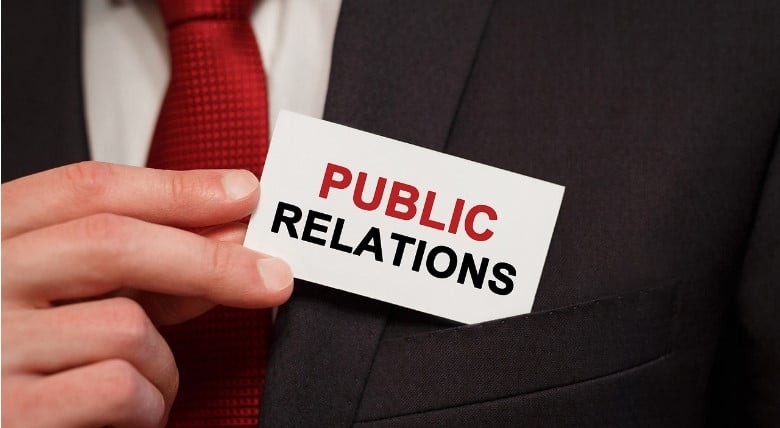Navigating the intricacies of compliance can often feel like a tightrope walk for businesses. PR plays a critical, if sometimes overlooked, role in this delicate balance. It’s not just about avoiding the obvious pitfalls; it’s about crafting a narrative that aligns with regulatory expectations while maintaining brand integrity.
Smart PR strategies act as both a shield and a compass—protecting against non-compliance and guiding towards ethical transparency. When done right, the consequence isn’t merely the avoidance of issues; it’s the bolstering of your company’s reputation in an ever-watchful market landscape.
In this article, we will explore how to avoid various PR issues and their consequences.’

Image Source: Pixabay
The mishandling of sensitive information
One common pitfall is the mishandling of sensitive information, which can trigger a compliance red flag and erode trust. To sidestep this, companies must ensure their PR teams are well-versed in current regulations and capable of articulating the brand’s message without overstepping legal bounds.
This means training in not only what to share but how to share it. Missteps here can lead to hefty fines or, worse, loss of consumer confidence—a blow from which recovery is no small feat.
Prioritizing regulatory knowledge within your PR strategy allows you to build a robust defense against such repercussions, ensuring that your brand’s story remains both compelling and compliant.
The transparency tightrope
Transparency is essential, but it’s a tightrope that demands impeccable balance. When PR fails to disclose enough, stakeholders feel left in the dark, overshare, and you risk revealing too much to the competition or running afoul of compliance. Striking the perfect pitch here hinges on knowing your industry’s disclosure requirements inside out.
So, how can businesses navigate this? Develop clear communication policies that outline what can be shared publicly and what should remain confidential. This clarity ensures everyone speaks with one voice—knowledgeable yet discreet. And remember, words matter deeply in this arena; choose them with precision.
The perils of inadvertent disclosure
In the digital age, where information spreads at light speed, an inadvertent disclosure can escalate quickly into a full-blown crisis. Even a well-intentioned PR statement can invite the dreaded notice of cease and desist, especially if it accidentally reveals trade secrets or breaches confidentiality agreements.
To avoid such legal entanglements, it’s crucial to impose rigorous review processes. Every press release, social media post, and public remark must go under the microscope for potential compliance issues before publication. By doing so, you not only dodge legal notices but also shield your company from the harsh spotlight of scrutiny that often follows
The crucible of crisis communication
In the tumult of a compliance crisis, effective PR becomes your lifeline. It’s not just about damage control; it’s about reshaping the narrative in real time. A rigid or defensive response can exacerbate public perception issues and even hasten legal action against your company.
Crafting a measured, transparent response plan before a crisis hits is non-negotiable. This means preparing statements addressing potential concerns without prematurely admitting fault or providing speculative information. It’s a nuanced approach, balancing candor with caution.
Moreover, controlling the flow of information internally is as important as the external message. Internal leaks can undermine your official stance and complicate legal proceedings—cultivating discretion within your team is as vital as the public statements issued.
The cascade effect of non-compliance
Non-compliance doesn’t just affect one part of the business; it can trigger a cascade effect, damaging multiple facets of the organization. When PR overlooks regulatory changes or misinterprets compliance guidelines, it sets off a chain reaction. The initial fallout might be a notice of cease and desist, but the repercussions extend far beyond.
Stakeholders may begin to question management’s competence, investors could reconsider their financial commitments, and employees might feel their job security wobble. To avert this domino effect, PR must work in lockstep with legal and compliance departments to ensure all communications are vetted for accuracy and adherence to the latest regulations.
The strategic alliance of PR and compliance
Lastly, you must understand that the alliance between PR and compliance isn’t just merely beneficial but foundational in the landscape where regulatory scrutiny is ever-present. Both departments must act in concert, with compliance providing the framework within which PR can creatively and safely maneuver.
This strategic partnership ensures that all messaging reinforces the company’s commitment to ethical standards and legal obligations. It’s about more than just avoiding penalties; it’s about cultivating a brand ethos that resonates with reliability and integrity.
Regularly scheduled meetings, joint training sessions, and shared resources are practical steps toward syncing these critical functions. When PR and compliance align seamlessly, they forge an indomitable force capable of steering the organization through complex regulatory waters while maintaining a favorable public image.



